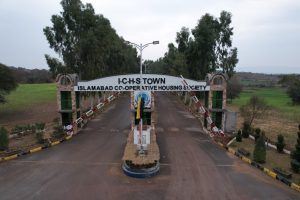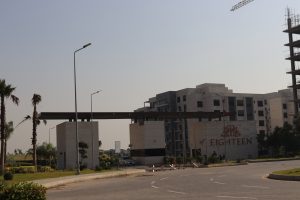The Special Investment Facilitation Council (SIFC) in Islamabad is pushing forward discussions to replace outdated government-owned houses in key sectors with high-rise buildings, a move set to unlock billions of rupees in state-owned land value. This transformative proposal is targeted at Islamabad’s central sectors F-6, G-6, and G-7, currently occupied by expansive single-story government residences that occupy some of the most valuable land in the capital.
In Sector F-6, where senior officials reside in large, single-story houses complete with servant quarters, the redevelopment would shift the layout to modern high-rises, maximizing land use and accommodating Islamabad’s urban growth. An anonymous government official highlighted the need for a “vertical construction approach” to sustainably manage Islamabad’s limited land resources and meet its development needs.
Unleashing 77 Acres of Prime Land in Sector G-6/1
The current government residences in G-6/1 alone occupy 86 acres, but recent studies suggest that this sprawling area could be restructured into high-rise developments on just 9 acres, potentially liberating an impressive 77 acres. This land is estimated to be worth PKR 52 billion—a value that could significantly contribute to Islamabad’s real estate market and the national economy.
SIFC and CDA Collaborate on Islamabad’s Vertical Growth
Although replacing single-story government residences with high-rise structures has been considered for years, progress has remained limited. Recently, however, the SIFC sent an official request to the Capital Development Authority (CDA) to evaluate vertical development options, focusing specifically on sector G-6/1. This request came on the heels of a report by the Pakistan Institute of Development Economics (PIDE), which addressed the burden of “dead capital” in Islamabad, or valuable land that remains underutilized.
According to PIDE’s findings, transforming the government residences into high-rise buildings could generate an estimated PKR 52 billion in land value while contributing approximately 0.09% to Pakistan’s GDP. The concept of repurposing government land through vertical development has proven successful in countries like the UK and India, demonstrating tangible economic and land utilization benefits.
Potential Economic Boost and Urban Revitalization
The SIFC’s proposal, still in its early stages and described as “raw,” emphasizes the long-term potential of a vertical development model for Islamabad. With strategic input from the CDA, this initiative could open up new opportunities for urban planners and investors, setting a trend for high-rise infrastructure in Pakistan’s key cities. “Let’s see what happens,” remarked an SIFC representative, noting that vertical construction has become a norm in major cities globally.
Unlocking Real Estate Potential in Islamabad
As discussions continue, Islamabad’s potential transformation stands to not only enhance land value but also address growing urban needs. High-rise developments in sectors F-6, G-6, and G-7 could redefine Islamabad’s skyline and bring unprecedented opportunities for real estate development in Pakistan. This initiative reflects a forward-thinking approach that, if realized, could set a new benchmark in sustainable urban planning for Islamabad and beyond.
For the latest updates on Islamabad’s real estate transformation and insights into high-rise developments in Pakistan, stay connected with PropertiesPakistan.com, your premier source for real estate news and opportunities in Pakistan.




